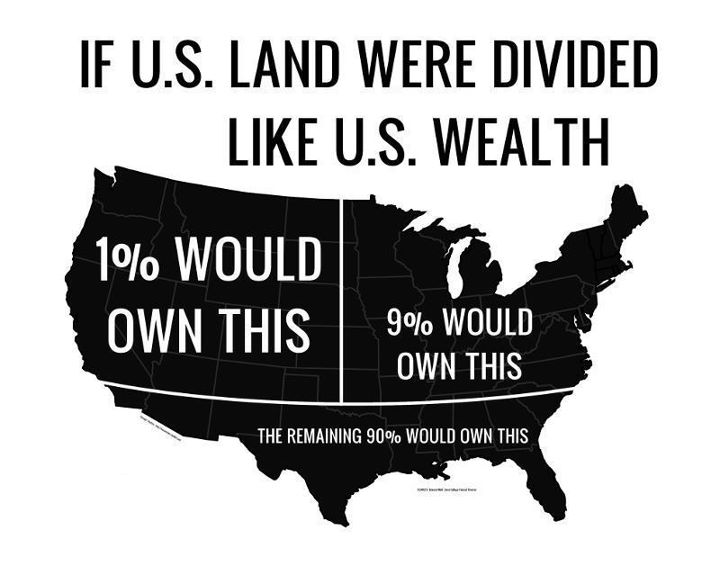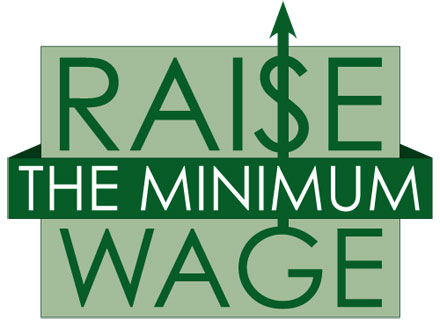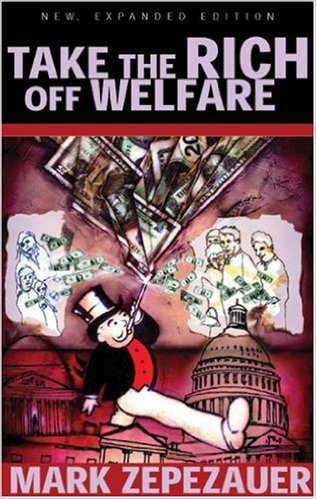Budgets and Deficits
by Steve Kangas
Few issues in American politics are as misunderstood as the national deficit and debt. On one hand, supply-siders claim that the debt is insignificant, while others claim that it’s a national disaster. The numbers say it’s neither:
Federal Deficit and Debt (Nominal dollars, in millions)1
Debt as a percentage Year Deficit Debt of that year's GDP 1979 -$40,183 -$828,923 34% 1980 -73,835 -908,503 34 1981 -78,976 -994,298 34 1982 -127,989 -1,136,798 36 1983 -207,818 -1,371,164 41 1984 -185,388 -1,564,110 42 1985 -212,334 -1,816,974 46 1986 -221,245 -2,120,082 50 1987 -149,769 -2,345,578 53 1988 -155,187 -2,600,760 54 1989 -152,481 -2,867,538 55 1990 -221,384 -3,206,207 59 1991 -269,521 -3,598,303 63 1992 -290,403 -4,001,941 67
Deficit facts:
- If the United States raised its tax rates to the level of Germany’s, it could not only wipe out the deficit, but eliminate poverty in America.
- If Reagan and Bush had balanced all of their budgets, they would have left America only 3 percent richer by the time Bush left office.
- America has run far larger debts than this (as a percentage of the GDP) since World War II.
- Almost all mainstream economists believe that, until now, the U.S. debt has been a minor problem requiring no immediate action. But they also point out that when the Baby Boomers start retiring in 2010, a worsened debt will combine with our Social Security problems to form a major financial crisis.
One of the central tenets of supply-side theory is that tax cuts actually increase overall tax collections. There is something faintly foolish about this assertion — it’s like claiming that you can make trees grow taller by cutting them down. But the supply-siders have their own statistics to quote. “During the Reagan tax-cut era,” Rush Limbaugh writes, “IRS collections actually nearly doubled… from $550 billion [sic] to about $991 billion.”2 This supply-side deception is as common as it is deplorable; it uses nominal dollars instead of constant dollars, which account for inflation. Here are the total tax collections expressed in both:
Tax Collections (billions)3
Year Nominal Constant (87 dollars) 1980 $517.1 728.1 1981 599.3 766.6 1982 617.8 738.2 1983 600.6 684.3 1984 666.6 730.4 1985 734.1 776.6 1986 769.1 790.0 1987 854.1 854.1 1988 909.0 877.3 1989 990.7 916.2 1990 1031.3 914.1 1991 1054.3 894.7 1992 1090.5 895.1
This chart raises two points. First, it allows you to see that real tax collections actually declined in the two years following Reagan’s 1981 tax cuts. (In fact, it took until 1985 to recover the 1981 level.) This is exactly the opposite of what supply-siders had predicted. They excuse it by noting that the 1981 cuts were phased in over three years, delaying entrepreneurial investment. But, according to their theory, accumulating tax cuts should have resulted in accumulating — not declining — tax collections.
Second, contrary to what Rush implies, real tax collections did not “double” between 1981 and 1989; they grew only 20 percent. This reflects the normal growth that our economy has experienced for centuries, as both our population and productivity have grown. The real question is not whether the tax collections grew, but whether they grew faster than normal under Reaganomics. They did not. The following chart shows the average annual growth of real tax collections under the last 10 presidents. As you can see, Reagan ties for 6th and 7th place:
Average Real Annual Growth of Tax Collections by President4
Average
President Annual Growth
Roosevelt 121.3%
Truman 3.7%
Eisenhower 2.4%
Kennedy 4.8%
Johnson 6.9%
Nixon 0.3%
Ford 6.4%
Carter 3.0%
Reagan 2.4%
Bush -0.0%
Of course, the above figures are for total tax collections; many people would prefer to see the figures on income tax collections, since that is where most of the tax cuts occurred. Unfortunately, these figures show an even lengthier drop in tax collections. The following charts are for both types of income tax collections: individual and corporate. They show a loss of at least $88 billion dollars (in constant 1987 dollars). How do we arrive at that figure? Remember that our tax collections have grown virtually every year since World War II, due to the almost constant growth of our economy (and with it, the tax base). However, after Reagan’s income tax cuts took effect in 1982, real income tax collections took a long fall, despite the fact our economy continued to grow. For the moment, let’s ignore the fact that tax collections could have been expected to grow after 1981. Let’s simply use 1981 as a baseline, multiplying it 8 times, and compare that to what was really collected over the next 8 years.
Individual Income Taxes (millions)5 Year Current Constant (87 dollars) 1981 $285,917 $367,692 1982 297,744 356,366 1983 288,938 332,033 1984 298,415 328,470 1985 334,531 354,677 1986 348,959 359,307 1987 392,557 392,557 1988 401,181 387,128 1989 445,690 411,533 ----------------------------- 82-89 total: 2,922,691 1981 (times 8) -2,941,536 ----------------------------- Net 8-year loss -18,845 Corporate Income Taxes (millions) Year Current Constant (87 dollars) 1981 $61,137 $78,623 1982 49,207 58,991 1983 37,022 42,544 1984 56,893 62,623 1985 61,331 65,024 1986 63,143 65,015 1987 83,926 83,926 1988 94,508 91,224 1989 103,291 98,092 ------------------------------ 82-89 total: 567,439 1981 (times 8) -628,984 ------------------------------ Net 8-year loss -69,545
Combined individual and corporate income tax loss: $88 billion.
Keep in mind that this does not even count the growth that was expected to occur since 1981. And, because the economy grows in the long run, income tax collections were bound to eclipse 1981 eventually; this is why the chart shows an ultimate rise in collections. But the fact that collections took a six-year dive refutes the supply-side claim that tax cuts increase tax collections.
Supply-siders like to blame the growing deficits of the 80s on runaway government spending, not tax cuts. However, the falling growth of tax collections in the above charts suggest that tax cuts indeed contributed to the deficit. And how much did runaway spending contribute? Actually, there is a surprise here, one that runs contrary to popular perception. Federal spending under Reagan actually grew more slowly than under Nixon, Ford and Carter!
Average Real Annual Growth of Federal Spending by President6
Average Annual Growth:
President Before servicing debt After servicing debt
Nixon 4.2% 4.2%
Ford 3.3 3.1
Carter 3.4 2.6
Reagan (82-87) 1.8 1.1
Reagan (82-89) 2.0 1.3
Bush 1.0 1.2
Clinton 1.0 0.4
So where did the deficit come from? A much clearer picture emerges when you consider federal taxes collected as a share of the GDP:
Federal Budgets, 1972-1993 (All numbers are a percentage of the Gross Domestic Product for fiscal year)7
Tax Total Human Year Receipts Spending Resources Defense 1972-81 (average) 18.7% 21.1 11.0 5.5 1982-93 (average) 18.7 23.1 12.0 5.8 Carter 1978 18.6 21.3 11.3 4.9 1979 19.0 20.7 11.0 4.8 1980 19.5 22.3 11.8 5.1 1981 20.2 22.9 12.2 5.3 Reagan 1982 19.8 23.9 12.5 5.9 1983 18.1 24.4 12.9 6.3 1984 18.1 23.1 11.7 6.2 1985 18.5 23.9 11.9 6.4 1986 18.3 23.5 11.4 6.5 1987 19.1 22.5 11.3 6.3 1988 18.9 22.1 11.1 6.0 1989 19.2 22.1 11.0 5.9 Bush 1990 18.9 22.9 11.3 5.5 1991 18.6 23.3 12.1 4.8 1992 18.4 23.3 13.0 5.0 1993 18.4 22.5 13.2 4.6
As far as general tax collections go, nothing happened! Relative tax collections remained the same in the 80s as in the 70s. The real story is how this tax burden was shifted. If general tax rates remained the same, but the top rate fell from 70 to 28 percent, then by mathematical force the lower classes must have made up the difference.
But back to the accusation that runaway spending primarily caused the deficit. This is wide open to debate, but, for argument’s sake, let’s suppose it’s true. When conservatives then blame House Democrats for declaring each of Reagan’s budgets “Dead On Arrival” before going on their own spending spree, liberals have several strong refutations:
- If Congress had passed Reagan’s budgets exactly as proposed, the national debt would have been $29.4 billion worse.8 (More)
- Many Republicans forget that they controlled the Senate from January 1981 to January 1987. Both the Senate and the House vote twice on each budget, once on the original budget bill, and again after the conference committee has hammered out a compromise. Therefore, the Senate is an equal player in the budget process.
- Reagan could have vetoed any budget unacceptable to him. He did not.
- Not all of Reagan’s budgets were declared DOA; Congress actually passed his first one. The first one was critical because it contained his famous, three-year supply-side tax cuts, and established a new direction for tax policy.
Along with the national debt grew our trade deficit. MIT professor Lester Thurow made the famous quote that “the epitaph of the Reagan presidency will be: ‘When Ronald Reagan became President, the United States was the largest creditor nation. When he left the presidency, we were the world’s largest debtor nation.'”9
U.S. Merchandise Trade Deficit and Current Account Deficit, 1981-198810
Trade deficit Current Account Deficit Year ($ Billions) ($ Billions) 1981 -34.6 +8.2 1982 -38.4 -7.0 1983 -64.2 -44.3 1984 -122.4 -104.2 1985 -133.6 -112.7 1986 -155.5 -133.2 1987 -170.3 -143.7 1988 -137.1 -126.5
___________________
1 U.S. Office of Management and Budget, Historical Tables, annual.
2 Rush Limbaugh, See, I Told You So (New York: Simon & Schuster, 1994), p. 129.
3 Internal Revenue Service.
4 Special thanks to Steve Casburn, an econometrician from Ohio State University, for deriving this chart. Revenue figures from Budget for FY 1987, Historical Tables. Inflation figures from U.S. Bureau of Labor Statistics, CPI-U.
5 Original data from U.S. Office of Management and Budget, Historical Tables, BUDGET of the US Government, FY 1996. Dollar conversions made from tables located there.
6 Budget for FY1997, Historical Tables; U.S. Bureau of Labor Statistics, CPU-U. Chart derived by Steve Casburn.
7 U.S. Office of Management and Budget, Budget of the United States Government, annual
8 House Appropriations Committee, Regular, Annual, Supplemental, and Deficiency Appropriations Bills: Comparison of Administration Budget Requests and Appropriations Enacted, Sep. 30, 1994.
9 Lester Thurow, "When the Lending Stops," New Perspectives Quarterly, Fall 1987, p. 14.
10 U.S. Department of Commerce
Main article… >









